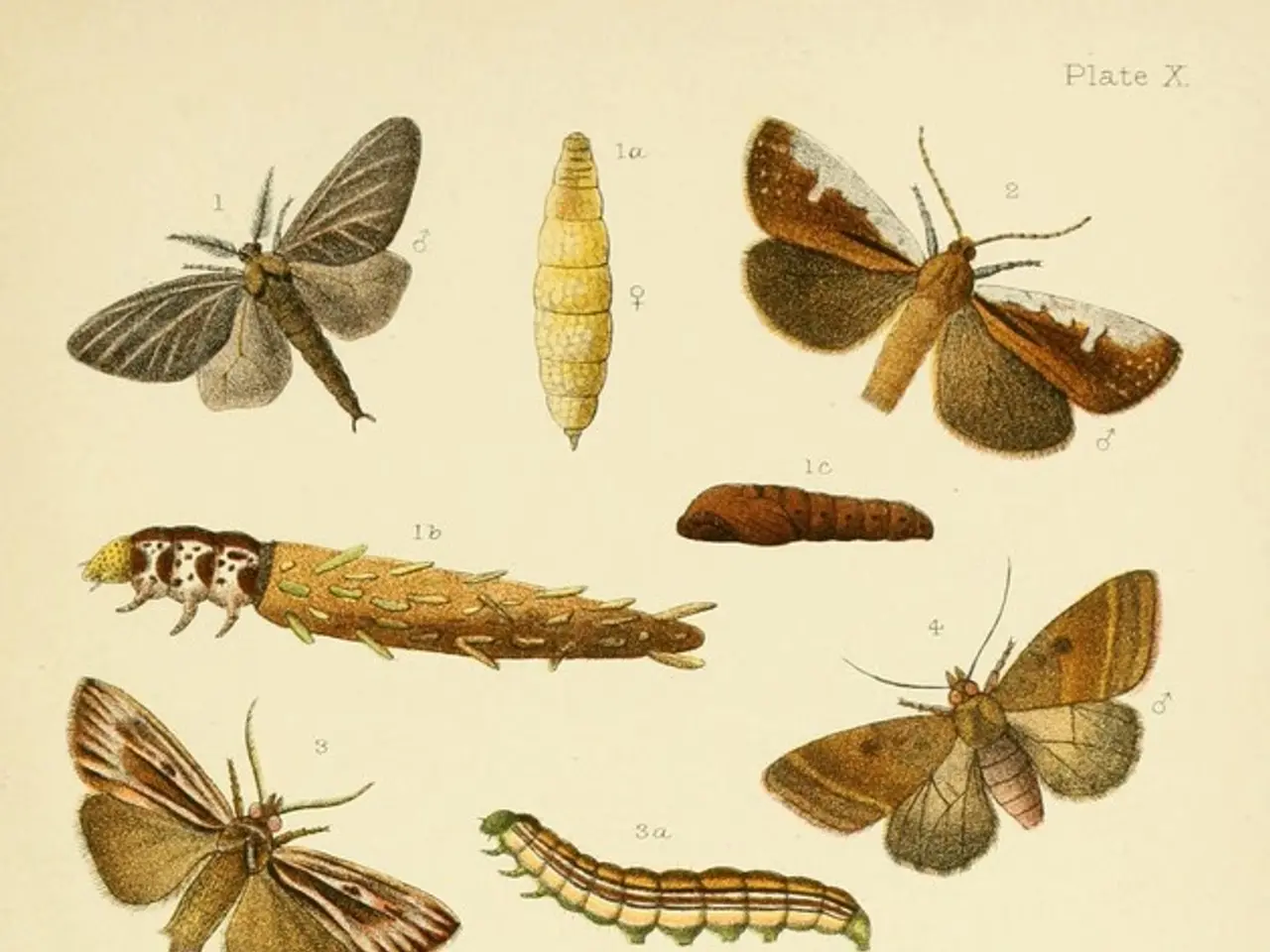Identifying and Managing Western Tent Caterpillars: A Guide
Article Title: Understanding the Western Tent Caterpillar: A Common Forest Pest
The Western Tent Caterpillar, scientifically known as Malacosoma californicum, is a common pest found throughout most of the western United States, up into southern Canada, and down into areas of northern Mexico. This insect is known for its destructive impact on broadleaf trees and shrubs, particularly during outbreaks.
The life cycle of the Western Tent Caterpillar consists of four stages: egg, larval, pupal, and adult. In the egg stage, the eggs are laid in oval masses, encircling stems, twigs, and branches, and covered in white silken tents in the spring. These eggs overwinter and hatch in early spring.
The larvae that hatch are about 1/8th (0.31 cm) long and have a blue head and body dotted with black markings. They develop through multiple instars, ranging from 5 to 8, depending on the quality of food. Early instars are gregarious and build silken tents on branches or trunks for protection and resting, while later instars become solitary before pupation. Larval development lasts approximately 4 to 7 weeks.
After maturing, the caterpillars leave their tents to pupate in silken cocoons found in bark crevices, leaf litter, or under structures. The pupal stage lasts 12-18 days, after which adults emerge, typically in late July to early August. Adult Western Tent Caterpillars are large moths with colours varying from dark reddish brown to yellow, gray or tan.
Western Tent Caterpillars feed on the foliage of broadleaf trees and shrubs, including quaking aspen, cottonwoods, red alder, crabapple, ash, birch, hazel, hawthorne, madrone, oak, willow, chokecherry, bitterbush, mountain mahogany, ninebark, sumac, wild currant, wild rose, and various fruit trees. Damage caused by the larvae can result in defoliation or even deforestation of thousands of acres of forest tree hosts during outbreaks. The damage is evident by the defoliation of the tree or shrub which may result in branch dieback, top-kill, reduced fruit set, or reduced growth.
Natural predators and controls include parasitic wasps and flies that attack various life stages (eggs, larvae, pupae), helping regulate populations. Birds and other insectivores also prey on caterpillars. However, for larger scale infestations, chemical insecticides or the biological insecticide Bacillus thuringiensis may be used. A virus is also known to infect the larvae of the Western Tent Caterpillar and quell outbreaks.
Small colonies of Western Tent Caterpillars in the home landscape can be removed by pruning out and disposing of the tents in soapy water. For more information on controlling Western Tent Caterpillars, contact your local extension office or forest entomology department.
[1] Source: University of California Agriculture and Natural Resources, UC Integrated Pest Management Program [5] Source: University of Idaho Extension, Integrated Pest Management
This article does not provide information on what Amy Grant eats or her specific area of expertise beyond culinary gardening.
A curious homeowner interested in gardening might find useful information about the Western Tent Caterpillar and how to manage its impacts on home landscapes, as detailed in articles from the UC Integrated Pest Management Program and the University of Idaho Extension. The weekly routine of such a homeowner could include monitoring their home-and-garden for signs of Western Tent Caterpillars and following appropriate lifestyle practices to maintain the health of their broadleaf trees and shrubs.





